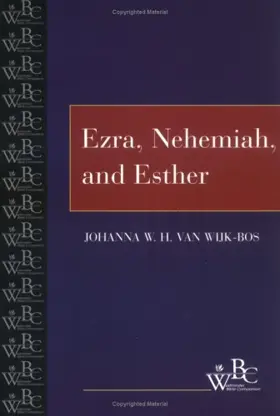

Ezra, Nehemiah, and Esther
in Westminster Bible Companion
Pages
147 pages
Publisher
Westminster John Knox
Published
5/1/1998
ISBN-13
9780664255978
Collections
This book appears in the following featured collections.
- Commentaries by Female Scholars by John Dyer
Reviews
This slim volume in the Westminster Bible Companion addresses a particular audience: it is written "to the church and more specifically to the laity," particularly those engaged in teaching the Bible within the context of the local church (p. ix). Wijk-Bos, therefore, has the difficult task of mediating to lay Christians an academic reading of two biblical books, Ezra-Nehemiah and Esther, that have not exactly been at the center of Christian piety. The commentary's approach is broadly historical-critical, sprinkled with literary and feminist observations. Especially influential is Tamara Eskenazi's work on Ezra-Nehemiah, In an Age of Prose (SBLMS 36; Atlanta: Scholars Press, 1988). The commentary follows a similar format throughout. Following short, general historical-critical introductions to each book, the commentary moves serially through the book from beginning to end with discussions ranging from one paragraph to four pages per section. Usually each section opens with a short selection from the NRSV, chosen from amidst the larger section. Such commentaries and series serve an important function within biblical scholarship, but are not the place for detailed, innovative interpretations. Wijk-Bos gives a general, informed reading of the text. She clarifies potentially mystifying elements in the text, and points the way to an informed, coherent reading of the text at a level appropriate to her audience. What is most interesting, however, about the commentary is how it attempts to reach its audience/market. Lines of historical connection, a "heremeneutical bridge," are drawn to connect experiences recorded within the text to the experience of the contemporary reader. Wijk-Bos accomplishes this in at least two ways. First, she attempts to relate to her reader through personal anecdotes and references to current events.
[Full Review]
